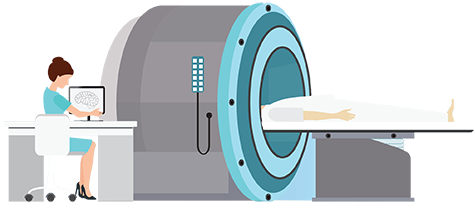

Forensic Radiology is a segment within the field of medical imaging that focuses on using radiology imaging techniques where evidence may be gathered in a court of law. The use of radiography in support of evidence has a long history dating back to the first few months after Wilhelm Roentgen’s discovery in 1895. A bullet seen using an x-ray was used for cases of attempted murder. Pathologists commonly use radiographs when performing autopsies. The images can help them identify elements that are out of place or questionable and then allows them to further investigate. As the radiologic sciences have advanced over the years to include MRI’s, CT’s, and ultrasound, the accuracy has increased to a much greater degree and has made it even more relevant for investigating crimes and gathering evidence.
In cases of murder or suspicion in the cause of death, radiology can be employed to determine the causes of death and also to determine the degree of detail required of an autopsy procedure. If a radiograph shows indications of substances or irregularities with anatomical structures within the body that point to foul play, a more detailed autopsy should be performed. In addition to the most severe scenarios, radiographs are often taken after someone is admitted to the hospital for car wrecks, assault cases, or any matter involving injury caused by someone or something that may be responsible for the damage. Often, these images taken after hospital admittance are used in a court of law perhaps to prove that some type of irreparable damage has occurred or to show the extent of the damage done. Another use for forensic radiology are child abuse cases. There have been many cases where a radiography has been used to determine whether acute or chronic injury has occurred.
Forensic Radiology has uses beyond issues of bodily harm as well. For example, radiographs are increasingly used to find drug trafficking activities. In cases where individuals have wrapped drugs and ingested or inserted drugs into their body, a radiograph can be used to detect the drugs. CT scans can very easily detect these types of activities and has helped law enforcement agencies in their screening efforts on several occasions. Forensic Radiology is also used in cases where victims have been found, but are beyond a state of normal identification. In these cases, radiology can be used in conjunction with dental and DNA analysis tools to identify the victim. Often, a premortem exam is compared to a post mortem exam and specific indicators of anatomical similarity are compared. Lastly, radiographs can be used during an autopsy to confirm certain genetic diseases that can help the surviving family with pathological suspicions they may have.
In addition, forensic radiology is used to examine certain donated body parts to ensure that they are safe to be used in medical procedures for those in need. If an organ, graft, or bone material is used, the radiograph can help medical professionals determine if the material is “diseased” or okay to use.
Forensic radiology is an emerging career option that combines education in criminal justice forensics with an education in radiologic sciences. Another path taken is that of forensics combined with anthropology. If you are an existing radiology professional and you have an interest in forensics, you will want to supplement your education with courses in criminal justice. There are many online options for criminal justice programs, but you will want to seek out programs that focus on forensics. By combining a knowledge of forensic sciences with radiology, you will have the skill and knowledge required to be an effective member of a forensics team. If you have a desire to fight crime and use medical imaging technology in the service of fighting crime, this could be a rewarding career option.